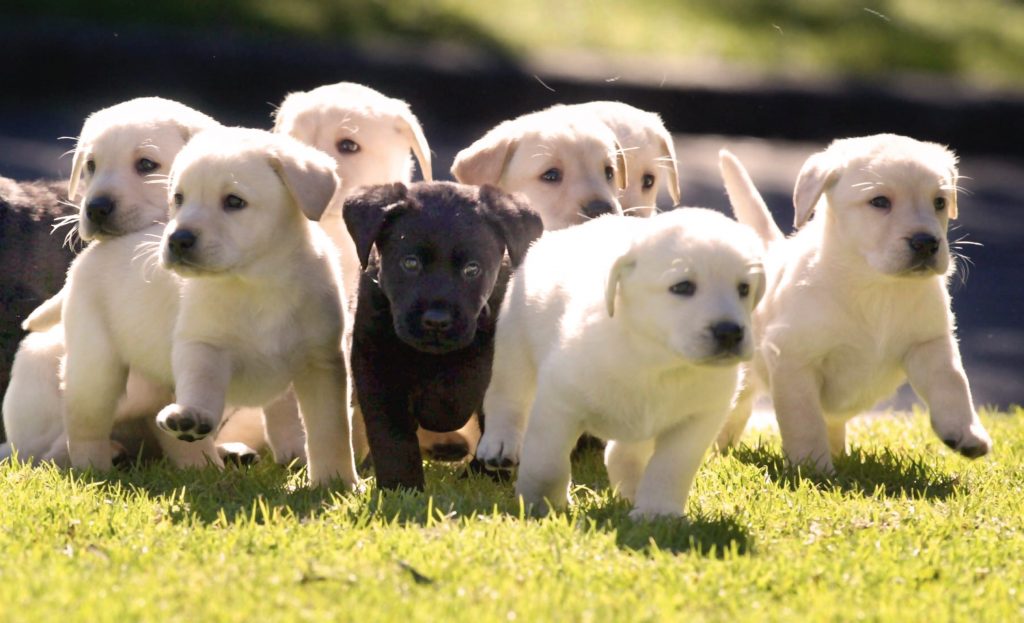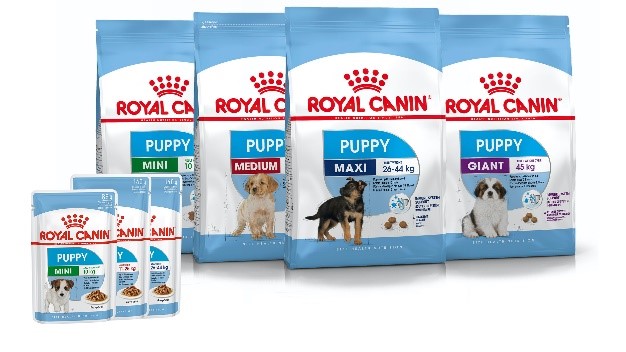 This is a question that we come across often at McDowall Vets. We understand how much there is to be across when bringing a new puppy home, and diet is one of the more important ones. There are lots of different opinions out there, so it can be a bit confusing, but let us try and simplify it a little and give you our recommendations.
This is a question that we come across often at McDowall Vets. We understand how much there is to be across when bringing a new puppy home, and diet is one of the more important ones. There are lots of different opinions out there, so it can be a bit confusing, but let us try and simplify it a little and give you our recommendations.
The first step is to understand the essential requirements of a balanced diet.
These are vital for everyone (including yourself!) and are:
– Fresh water: make sure that you always have plenty of fresh water available every day.
– Protein: helps to build your puppies tissue and makes them strong.
– Fat: essential fatty acids from plants and animals (Omega 6 and 3).
– Energy: puppies need twice as much energy in their food than their older self.
– Calcium and phosphorous: helps the formation of bones and skeletal structure.
– Vitamins and minerals and trace elements.

A nutritionally balanced diet aids in giving your puppy the best start in life by enabling safe controlled growth, a healthy skin and coat, well-formed stools, healthy bones and joint development, and a strong immune system. An unbalanced diet manifests itself in a poor skin and coat, loose stools, flatulence, and unhealthy body condition. If you notice any of the above changes in your puppy, please chat to one of our vets who will be happy to provide further advice and answer any questions.
 Puppy foods need to be higher in protein and energy to enable growth as well as being low fat and bland enough so as not to upset our puppies little stomachs. Fortunately, a lot of research has been done on the correct balance of the various nutrients listed above to create the ideal ratios of these in commercial puppy foods. For this reason we suggest starting puppies on a good quality commercial puppy food such as Hills science diet or Royal Canin puppy diets.
Puppy foods need to be higher in protein and energy to enable growth as well as being low fat and bland enough so as not to upset our puppies little stomachs. Fortunately, a lot of research has been done on the correct balance of the various nutrients listed above to create the ideal ratios of these in commercial puppy foods. For this reason we suggest starting puppies on a good quality commercial puppy food such as Hills science diet or Royal Canin puppy diets.
The second step is to understand what size your puppy breed is going to grow to. The commercial dry foods are made for different puppy sizes as shown below.
| Size | Weight (Adult) | Maturity |
| Extra Small | Up to 4kgs | 8 to 10 months |
| Small | Up to 10kgs | 8 to 10months |
| Medium | 11 to 25kgs | 12 months |
| Large | 26 to 45kgs | 15months |
| Giant | 45kgs+ | 18 to 24 months |
 These different puppy diets will have kibble that is the correct size for your puppy’s mouth and the correct calorie densities calculated for their breed. It is also important to note that the different sized breeds mature at different ages which means that is when they should be transferred onto an adult version of the dry food.
These different puppy diets will have kibble that is the correct size for your puppy’s mouth and the correct calorie densities calculated for their breed. It is also important to note that the different sized breeds mature at different ages which means that is when they should be transferred onto an adult version of the dry food.
How much do I feed and when?
Puppy foods will have feeding guides on the back of the bag to guide you on daily feeding amounts. This volume should be split into the number of meals being given and assumes that no other food is being offered to the puppy. We recommend calculating the amount required per meal and measuring that out into a measuring cup (by weight) and then marking the cup with a marker pen at that level, so that whoever feeds the puppy always gives the correct amount of food.
Puppies are normally weaned from their mum at about 6 weeks of age. They should then be offered 3-4 meals a day until 8 weeks old and then 3 meals a day until 12 weeks of age. After 12 weeks of age we reduce their meals to twice a day. In the first few months of life we will often add some puppy milk or watered down cows milk to the breakfast meal to help the puppies transition from an all milk diet to a diet of solids.
It is also important to keep their diet constant with minimal variation for those first few months as puppies are very prone to developing diarrhoea if they receive too much variety in their diet at this stage.

At 12 weeks of age, when we reduce the meals to twice daily, we can start adding a little more variety into their evening meals. This is the fun stage as we can start to be a little more adventurous with their diet and add a little variety. When doing this, we would suggest reducing their evening meal dry food portion by 20% and start adding in vegetable matter such as carrot, potato peel, green vegetables, broccoli, pumpkin and a little bit of protein such as chicken mince, beef mince or kangaroo mince. Bring all of these components together with some warm water or gravy to make an appetising stew. One of the reasons we recommend this, is that the fibre is excellent for gut and anal gland health as well as the fact that the veggies help to fill our puppies up and so lessen the risk of us overfeeding them with high calorie dry food!
There are certain foods to avoid; namely onions, grapes, raisins, high fat foods (avocado; bacon, meat fat) and cooked bones.

It is important to remember to start setting boundaries and routines early. This means, setting mealtimes and not continuously feeding throughout the day (do not let the puppy dogs’ eyes fool you). By setting mealtimes it assists with reducing future weight issues and allows you to monitor their body weight carefully. It also helps with reducing behavioural issues when it comes to begging for food throughout the day.
Treats
Many treats on the market are highly processed and are high in salt, sugar, and fat. Like us, treats should be a sometime food not a daily food. We would recommend the use of low fat, low calorie treats for training such as liver treats (Vets Best Rewards) or dried chicken breast. Remember, you only need to give a very small amount for each reward!
So there you have it …………. Puppy feeding needn’t be too complicated! We love meeting new puppies, so please come in and ask us if you have any queries. We will discuss all of this and more in our free puppy registration checks and also go through this information and more in our puppy school lessons (click here for more information)
Good luck with your new bundle of joy………. Having a puppy in the house s such a wonderful time!




